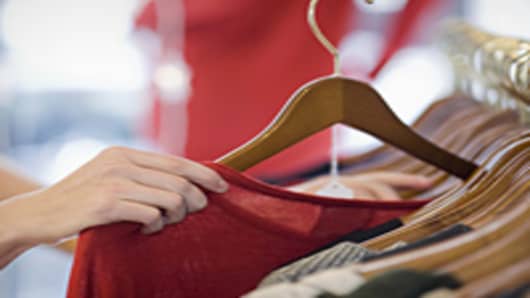Even though the kids have barely gotten settled into the routine at summer camp, in retail land it's already getting to be that time of year again: back-to-school season.
If you headed out to the mall this weekend to hit the Fourth of July sales, you were likely greeted at the door with a taste of a fall. At Old Navy , for example, quilted jackets and school uniforms were prominently on display. (Nevermind that customers still have many weeks ahead to use any bathing suits they snagged on clearance.)
And the catalogs arriving in the mail from Pottery Barn Kids and other retailers are chock full of backpacks and lunch boxes.
That also means it's time for analysts to turn in their back-to-school retail sales forecasts.
Craig Johnson, president of Customer Growth Partners, said Tuesday that he expects back-to-school spending to climb 6.2 percent to $467 billion between July and September from the prior year. If this proves correct, it would be the best back-to-school spending growth since 2006.
Johnson points to several reasons for his optimistic forecast. First, disposable personal income has been on the rise, up 3 percent from last year's level.
Households also have healthier finances, according to Johnson. The 91 percent of the population that is employed has been cleaning up their debt loads, and household debt service ratios are down to 11.5 percent of income, according to the Federal Reserve. That's the lowest level since 1995.
Meanwhile, personal savings rates, which spiked to 8.2 percent two years ago during the recession, are returning to more normal levels, Johnson said. Right now, the rate is about 5 percent, which is just a touch above the historical 4 percent norm.
Johnson's back-to-school forecast comes just ahead chain-store sales reports for June, which are expected to show a 4.6 percent increase in same-store sales from the same period last year, according to Thomson Reuters estimates.
Last year, retailers reported a 3.1 percent gain in retail sales during June.
June is not an exceptionally important one in the retail calendar. Retailers typically use the time to clear out spring and summer merchandise to make way for the back-to-school items. But June sales will be watched closely for what it says about the health of consumers.
In May, consumer spending was hurt by rising gasoline and food prices as well as by concerns about the economy.
Johnson expects consumers are savvier shoppers now and are able to navigate these concerns.
Still, consumers will be greeted with higher apparel prices when they do their shopping for the fall.
"We anticipate average ticket price increases of 5 to 10 percent for apparel, and higher percentage increases for low-cost items where cotton costs predominate," Johnson said. "But the key is what the out-the-door average selling price will be, as strapped consumers resist higher prices for lower-cost commodity goods, while upmarket consumers barely blink at $5 or $10 increases for items from $80 on up.”
How retailers manage this dynamic will separate the well-managed companies from those that are not. Johnson expects the stronger performers to use the inflation to add value and generate a higher gross margin.
The news will be very different in the consumer electronics category. Johnson expects anemic topline dollar growth in the sector as falling prices offset rising unit sales.
He expects strong demand for tablets, eReaders and smartphones, and for Best Buy to lose customers to Amazon and Apple , the fastest growing consumer electronics retailers.
Questions? Comments? Email us at consumernation@cnbc.com. Follow Christina Cheddar Berk on Twitter @ccheddarberk.



